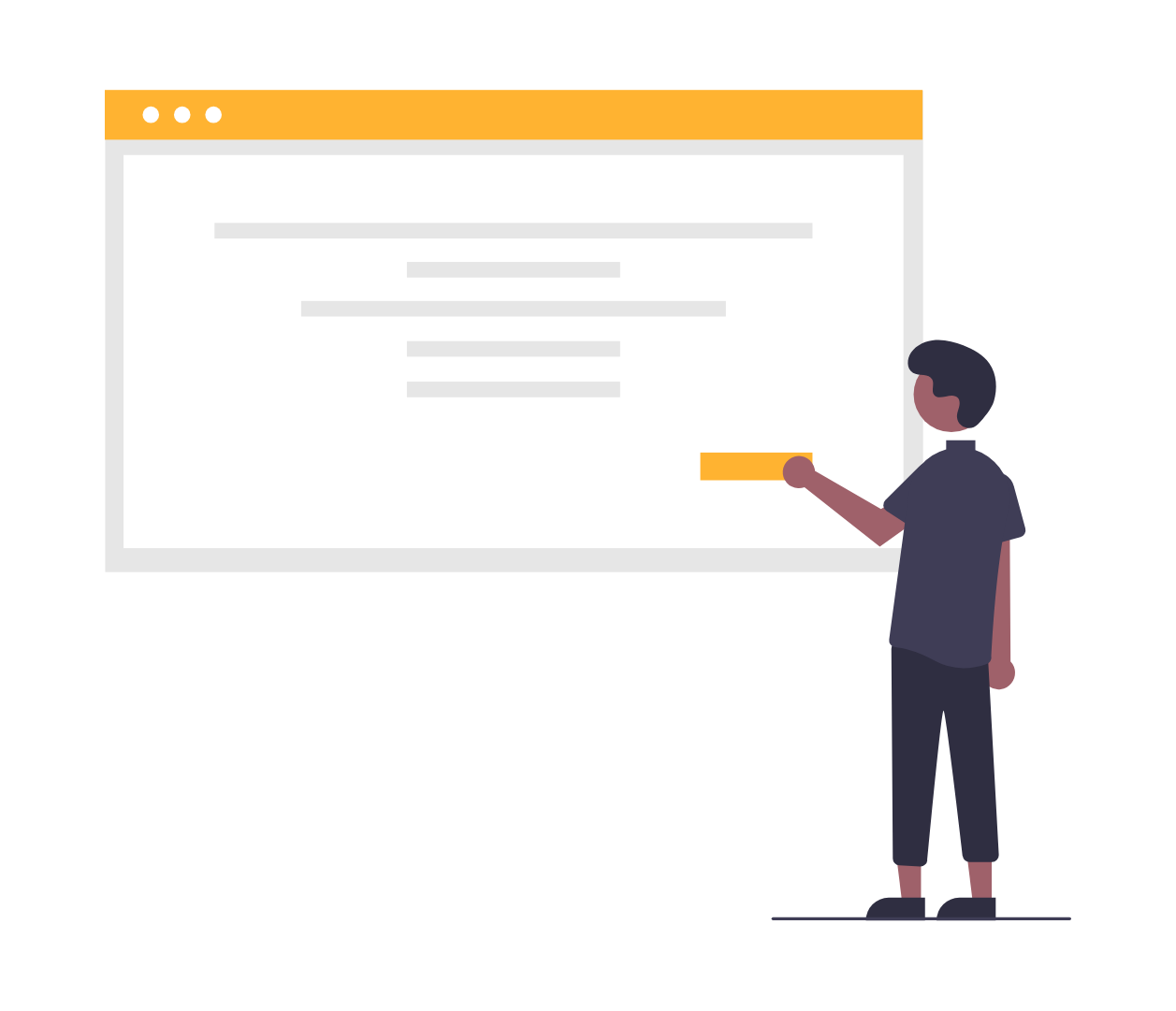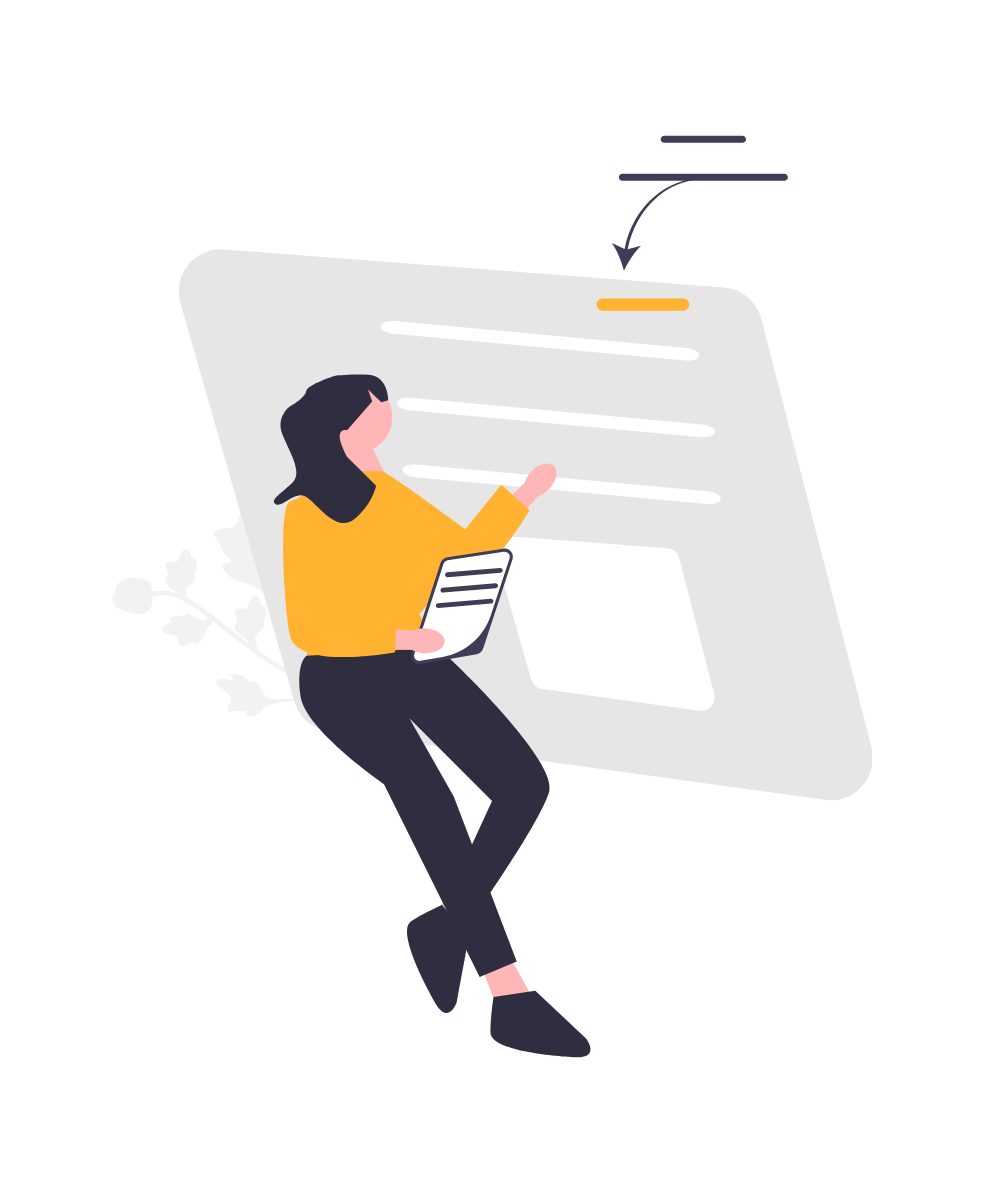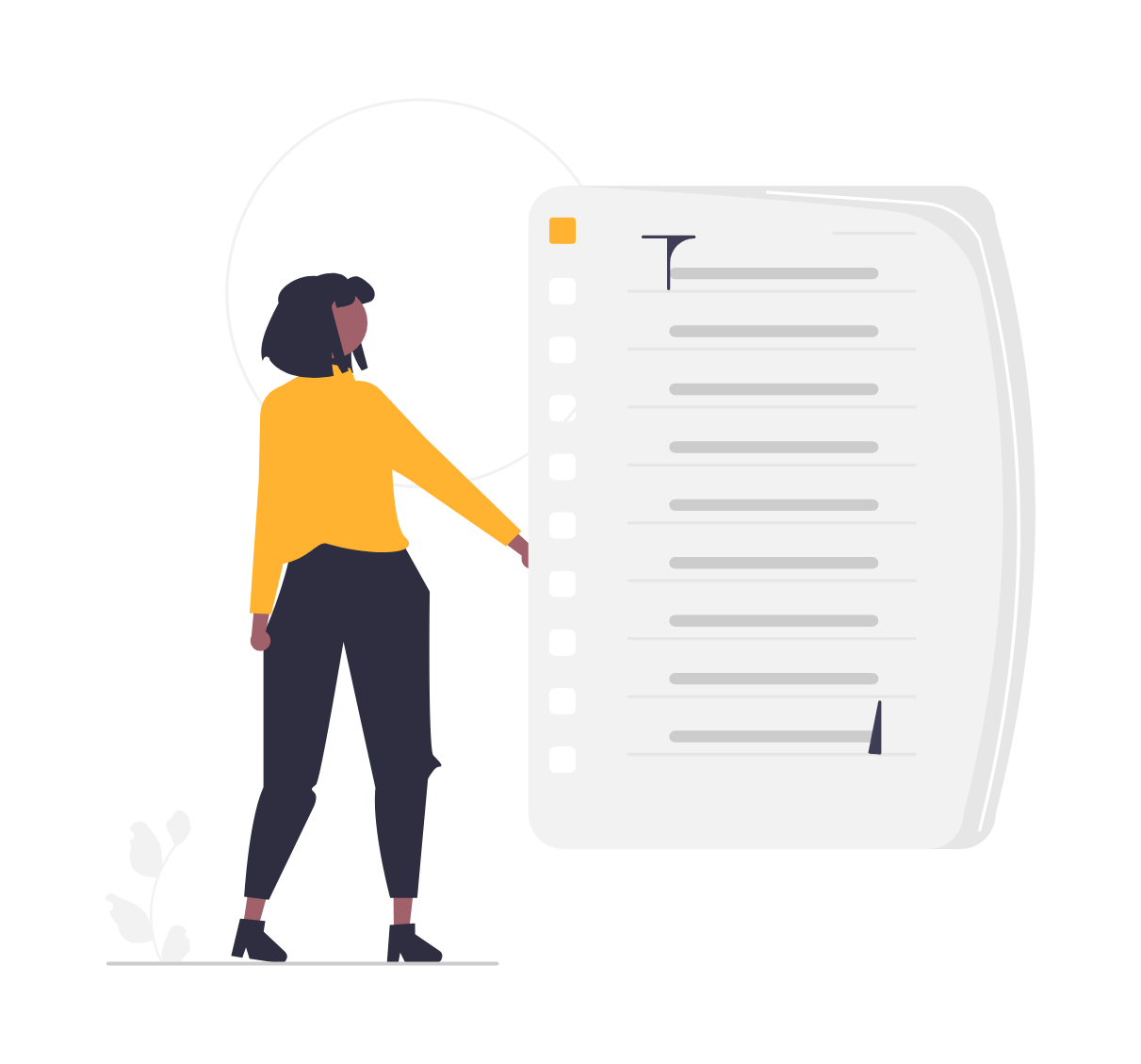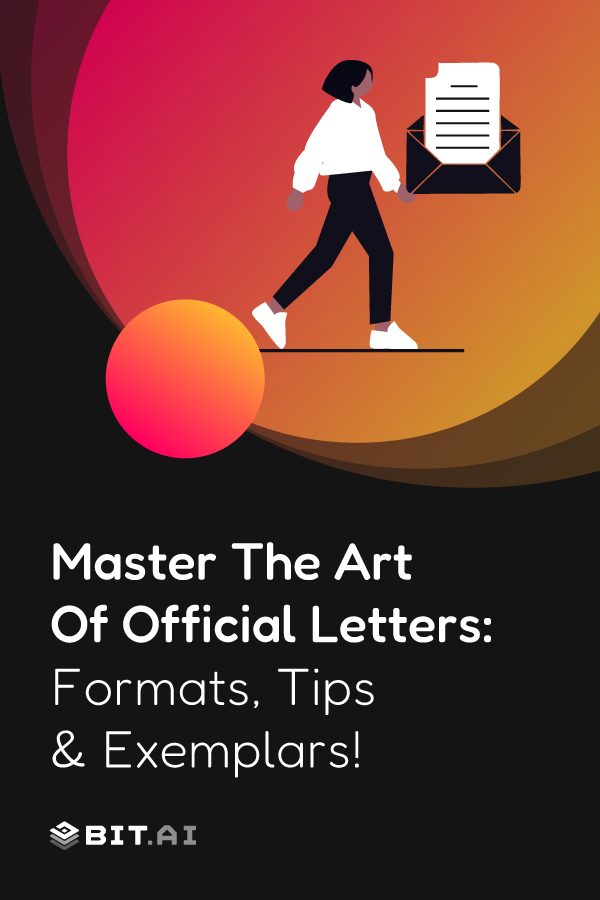Imagine this scenario: “Your heart is racing, what you have to say is crucial, and you have to compose a letter that can express clearly what you are feeling right now.” You want your message to land just right, whether you’re writing to a manager, a public official, or a professional organization. But what’s the secret to that perfect tone? It’s all about maintaining the balance: professional yet personal, to the point yet respectful.
An effectively structured official letter is your gateway to clear, confident, and professional communication.
[/vc_column_text]
Whether it’s a leave application, a formal request, or delivering important news, mastering the art of writing official letters will benefit you not just in the workplace or academics, but across many aspects of life. Start learning today, and your future self will thank you.
So, are you ready to turn your words into action? Official letter writing seems like a difficult art, but when we do it step by step, with formats, tips, and real-life examples, it all becomes a piece of cake.
In this blog, we’ll walk you through the essentials of writing an effective official letter to guide you every step of the way. Let’s dive into the format, tips, and examples that will help you write with clarity and confidence.
Official Letter vs Informal Letter
Have you ever thought about the differences between informal and formal letters?
An informal letter, or correspondence, is personal and informal. A letter you write to friends or family members is written in a more informal way and a casual structure.
A formal letter is business-like, formal, and official. It is used when at work, for business or official purposes, and is written in a formal structure and polite tone. In brief, formal letters are formal and official, whereas informal letters are personal and friendly, such as thank-you letters.
Knowing when to write each type of letter will help you to get your message across!
Quick Differences at a Glance
| Feature | Official Letter | Normal Letter |
| Purpose | Professional/business communication | Personal/friendly communication |
| Tone | Formal and respectful | Casual and warm |
| Language | Formal, no slang | Informal, slang allowed |
| Format | Fixed structure | Flexible structure |
| Salutation | Dear Mr./Ms./Sir/Madam | Hi, Hey, Dear [Nickname] |
| Closing | Sincerely, Regards | Best, Take care |
Now that you know how formal letters differ from informal ones, let’s explore why people write official letters in the first place.
🚀 Skip the back-and-forth. Co-create and refine official letters in real time with Bit.ai.
Primary Reasons to Write an Official Letter
Dear readers, these letters are not just about what you say, but how you say it. It will help to build trust, demonstrate seriousness, and ensure your message is taken seriously. Here are the main reasons to write official letters:
1. Business Communication in an Organization or Between Organizations

It can be a memo to a colleague, a notice to a client, an inter-departmental communication, or abusiness letter. Official letters serve to ensure a clear and professional conversation between and among organizations, ensuring an efficient flow of operations and understanding.
Learn more 👉Sales Letter: What is it & How to Create it?
2. Requesting Permission, Services, or Support
Formal letters can be used when you want permission to do something, want another group or team to help you, or need resources to be authorized for your work. The formal method of requesting such is often through an official letter. The format of formal letters makes sure that your needs are recorded and taken seriously.
3. Filing Complaints or Grievances
When you have a complaint that must be addressed, perhaps a failed service or workplace matter, or even a disagreement over policy, official letters give a framework to express dissatisfaction in a professional manner and request a resolution.
4. Making Job Applications or Quitting a Job

Writing a job acceptance letter, a cover letter, and a resignation letter are typical examples of official letters. They reflect your professionalism and help set the tone for your career-related communications.
Want to know more? Read here 👉How to Write a Letter of Resignation
5. Official Announcements
Be it updating the stakeholders on a new policy, making an announcement on a new venture, or any other crucial announcement, official letters are formal communications that cannot be ignored easily and are authoritative in nature. An official invitation letter is a common example of this.
With the purpose clear, we’re ready to build your letter from the ground up. Let’s get into the step-by-step guide.
9 Awesome & Simple Steps to Writing an Official Letter Guide
Wanted to write an official letter for your upcoming vacation or to HR of your dream company, but don’t know the right process? Don’t worry, we are here for your rescue!
Writing an official letter might be a challenging task, but it can be broken down into manageable portions, which will make the process easy and quick. This is how you can make a clear, professional, and effective official letter:
Step 1. Prepare Your Document

Start by selecting a neat, professional font, like Arial, Calibri, or Times New Roman. Usually, size 12 Font and consistent spacing make your letter look professional and simple to read. Also, make the margins of your document one inch all around. This not only makes your letter look neat, but it’s also a normal format practice in business.
Step 2. Add Your Address and Date
Now, it is time to add your address. You have to write your complete address. Where? At the upper left side of your document. What to include? This must contain your name, street address, city, state, and zip code. After adding your address, it’s time to add a date. Below your address, write the date of conveying the letter.
Step 3. Add the Details of the Recipient
Now, write the name of the recipient in full, followed by his or her job title, organization, and address below your address and the date. Also, ensure that you check the spelling of names and job titles twice, as these small elements depict respect and professionalism. It also enables your letter to get into the correct hands or department.
Step 4. Put a Formal Salutation
Now, you need to mention a formal salutation at the top of your letter. To do this, the most recommended format is “Dear [Title][Last Name],” such as “Dear Mr. Steve,” or Dear Dr. Petrova, etc. When you are not sure about the name or gender of the recipient, then a greeting that says, Dear Sir/Madam would work here.
💡 Pro Tip: Don’t start from scratch! Use a ready-to-use Formal Letter Template and make official communication easier than ever.
Step 5. Add the Subject

On the line immediately after the salutation, write the subject line all in capital letters. This topic line must convey the purpose of the letter in one short line, such as REQUEST LEAVE OF ABSENCE, or APPLICATION Job Vacancy. This line also tells the recipient how urgent your request is, and it serves to preview the content of the letter.
Step 6. It’s Time to Write the Body
The body of your formal letter will enable you to express your major point. You need to break down your letter into 3 logical paragraphs in the following way:
- 1st Paragraph: The first paragraph should clearly address the purpose for writing: plain and simple, direct, and to the point.
- 2nd Paragraph: The second paragraph should provide details, an explanation, or any context needed.
- 3rd Paragraph: The final third paragraph should conclude the message. This can include your request, a summary, or next steps.
Step 7. Add a Professional Signature
Now, it’s time to wrap up your letter with a polite closing word like, sincerely, regards, or respectfully, and then a comma. To do this, add some lines of space (to write your hand signature in case of printing), and type your name in full below. When sending the letter electronically, a typed name is sufficient, but you can add a digital signature for a more professional touch.
Step 8. Add Enclosures (if any)
When you are adding some extra documents (such as forms, resumes, or supporting evidence), note them at the end of your letter in the section of enclosures. For example: Medical Certificate. This is to warn the recipient to be on the lookout for such attachments, and nothing is missed.
Step 9. Proofread
Before posting your letter, take a few minutes to proofread it. Proofread to find mistakes in spelling, grammar, and punctuation. To do this, ensure your letter formatting is smooth and the message is concise.

With the examples in mind, let’s break it down further with a quick checklist to make sure your official letter hits all the right notes.
The Official Letter Format: Quick Checklist
Writing an official letter isn’t just about getting your message across; it’s about doing it in a polished, professional, and organized manner. Whether you’re applying for a job or addressing a formal request, following a clear format ensures your message is understood, acted on, and respected.
There are many factors that can create an impactful Official Letter. Below is a list of essential parts that every Official Letter should contain to make your official letter clear, professional, and effective:
- Sender’s Address and Date
- Recipient’s Address
- Subject Line
- Salutation
- Letter Body
- Final Closing Statement
- Signature
- Enclosures
By following this checklist, you will soon become a pro in writing an Official Letter. Don’t forget to give us credit for writing a well-organized and clear letter a professional manner!
Official Letter Examples: Write like a Pro
Example 1: Job Application for the profile of Marketing Manager
Steve Wheeler
123 Maple Street
Springfield, IL 62704
June 12, 2025
Ms. Emily Johnson
InnovateX
456 Oak Avenue
Chicago, IL 60611
Dear Ms. Emily,
Subject: Application for the Position of Marketing Manager
I am writing to express my interest in the Marketing Manager position at InnovateX, as advertised on your careers page. With over six years of experience in digital marketing and a proven record of increasing engagement by 40% through innovative campaigns, I am confident in my ability to contribute meaningfully to your brand.
Please find my resume attached. I look forward to the opportunity to discuss my application further.
Yours sincerely,
Steve Wheeler
Phone: +1-XXX-XXX-7890
Email: steve.wheeler@email.com
Example 2: Formal Leave Absence
Rohan Mehra
12 Park Lane
Mumbai, 400001
June 12, 2025
Ms. Priya Sharma
HR Manager
ABC Corporation
22 Business Avenue
Mumbai, 400002
Dear Ms. Sharma,
SUBJECT: APPLICATION FOR LEAVE OF ABSENCE
I am writing to formally request a leave of absence from September 20 to September 30, 2025, due to personal reasons. I have ensured that all my current tasks are up to date, and I am coordinating with my team to ensure a smooth workflow during my absence.
Please let me know if you require any further information or documentation. I appreciate your understanding and consideration.
Sincerely,
Rohan Mehra
Now that you have a solid grasp of the official letter examples, let’s take it a step further with the perfect tool to help you make your official letter shine!
⏳ Don’t stop here, practice with these must-have official letter templates:
Bit.ai: Your Letter Writing Companion
If you’re looking to create polished, professional written communication for the workplace, a formal request, or correspondence with a two-way tone, Bit.ai is here to help you.
Bit.ai is the world’s ultimate AI-powered platform built for teams who want to create smarter, more interactive documents. Whether you’re writing letters, taking meeting notes, building proposals, or crafting wikis, Bit.ai helps you do it all in one place. With real-time collaboration, smart formatting, rich media support, and seamless sharing options, it transforms how you write, work, and communicate. Bit.ai provides clean, professional documents that actually get used, so what are we waiting for? Let’s see how that works!
Professional Template + AI Intelligence
The Bit.ai platform provides a formal letter template, that can be used for letters to clients, formal requests to unknown parties, and formal messages that convey a clear and consistent structure. Bit.ai reduces time by providing a useful starting point. With Bit.ai’s AI Genius Writing Assistant & doc builder, you can also create a letter by simply selecting the “Formal Letter” generator.
Fill out the custom fields, and bam, the Bit.ai platform will automatically format and section your letter, as well as refine the tone and clarity to get you writing faster and with confidence.
Write Smarter and Faster
With AI Genius from Bit.ai, you have access to over 300 smart AI content generation tools for all of your formal writing needs for things like letters, proposals, reports, and standard operating procedures. You can outline your ideas, auto-format your document with headings, lists, tables, or quotes, and change the language, tone, and structure to fit any audience, whether it’s your manager, a government office, or a partner.
Collaboration & Secure Sharing
Bit.ai was made to be a powerful collaborative tool. You can invite colleagues or external partners into a document, assign them the ability to edit or comment, and work together in real time with inline comments, mentions, and the version history to fall back on if you need to retrieve any changes.
Once you are ready to share your document, Bit has trackable links, password protection, content expiry, and secure file downloads, so only the intended recipients get a chance to see your official letter.
Rich Embedding & Integration
Bit.ai allows you to embed live media in your documents, such as PDF files, tables, slide decks, spreadsheets, and code snippets, rather than sending inactive attachments! These interactive “smart docs” will help to make your letters more informative, visually compelling, and professional. Integrated with over 100 popular tools (Google Drive, Dropbox, GitHub, Figma, etc.), it helps seamlessly transition content written in Bit into your formal letters without switching.
Whether you are writing a cover letter, resignation letter, or letter requesting something from an organization, Bit.ai helps you write with assurance, polish, and control. Combining templates, AI-based writing suggestions and references, collaborative workspaces, and defense from prying eyes makes it your complete solution to letter writing in 2025.
Writing an Official Letter Pro Tips
In this section, we’ll walk you through essential tips that can elevate your writing, helping you sound confident, courteous, and clear every time you put pen to paper (or fingers to keyboard). Formal letter writing is not merely filling in the blanks but ensuring that your message is concise and remarkable. The following are professional letter-writing tips to make you shine:
- Be Clear and Concise: Be brief and go to the point. Avoid using excessive jargon or explanations where they are unnecessary.
- Apply Correct Tone: Be polite, respectful, and formal. Although you may be dealing with a sensitive matter, use language that is professional.
- Format Matters:Adhere to the formal letter format. It demonstrates that you value the time and attention of the recipient.
- Triple-Check Details: Names, dates, addresses, because accuracy is crucial.
- Typos and Errors: They can defeat the purpose of your message. Read your letter aloud or have a friend look at it.
- Remain General: Be factual and solution-oriented, rather than emotional and complaint-oriented.
Wrapping Up: Write Every Letter Confidently
Mastering the art of writing an official letter may seem overwhelming at first, but with the right format, tone, and structure, it becomes a powerful communication tool.
Whether you’re applying for a job, requesting information, or delivering formal updates, a well-crafted official letter reflects your professionalism and intent clearly. With the help of modern tools like Bit.ai and a solid understanding of best practices, you can write with confidence and clarity no matter the purpose.
Follow the correct official letter format, and make your writing clear, respectful, and professional. It will take some getting used to, but soon you will identify your voice and style, and every formal letter will seem natural and will get the job done.
With any luck, you now have the tools, templates, and tone, so why not go ahead and write your next official letter like a pro?
📯Sign up for Bit.ai and explore AI-powered letter templates, smart formatting, and real-time collaboration features designed to make official writing easier, faster, and more professional.
FAQs
- How do you write a good official letter?Make sure you have a clear objective. Your letter must be organized in a professional way, and you must always use a formal tone and close your letter politely. Lastly, do not skip proofreading!
- What is the professional format of an official letter?An official letter format will contain the address of the sender, date, the details of the recipient, subject, salutation, the body (introduction, details, conclusion), closing line, and signature.
- What are some common types of official letters?These are leave requests, resignation letters, complaint letters, job applications, letters of recommendation, and inquiry letters.
- How do you end an official letter?Use a polite ending statement, followed by your complete name and contact information, followed by a suitable sign-off, such as “Regards” or “Yours sincerely.”
Keep Reading & Learning 📚


